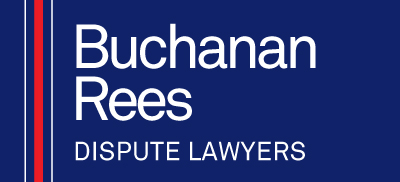

Since 2010, the Global Law Experts annual awards have been celebrating excellence, innovation and performance across the legal communities from around the world.
posted 11 months ago
There is a lot of commentary in the press in relation to insolvencies and the rate at which they are occurring. We have seen attention grabbing headlines such as:
“Insolvency wave that hits business far and wide.”
“Insolvency Armageddon sees number of failing businesses double”
“The number of collapsing companies is surging”.
It is unsurprising that such reports have led to increased focus in the market on insolvency and insolvency related matters. Increasingly, we are being asked about available options as financial pressures accrue and the higher cost of living takes hold.
ASIC provides the following statistics for businesses placed into insolvency:
| 2022 | 2023 | |
| March | 464 | 828 |
| April | 463 | 606 |
| May | 560 | 866 |
| June | 540 | 786 |
While insolvencies were at a record low during the pandemic due to government support and compensations, the ASIC statistics demonstrate a spike in administrator appointments. Business collapses include high-profile construction companies, manufacturing, retail trade, and fine-dining meal-delivery services, to mention just a few.
Some have predicted that this is more than a correction and that insolvency and restructuring will pick up across many industries. With a tighter economic climate, banks and other creditors are less willing to extend debt and equity funding. Tech start-ups were particularly hard hit, according to restructuring practitioners. The ATO has also started issuing director penalty notices, which often bring about businesses being placed in insolvency since the directors are personally liable for the debt.
So, with this happening all over Australia, what are your options if you find yourself in a financial pothole?
If your business is in financial difficulty, Chapter 5 of the Corporations Act 2001 states that it can be placed under external administration.
The three most common forms of external administration are:
• Administration
• Liquidation
• Receivership
In January 2021, the Australian government introduced a new section, Part 5.3B, into the Act to establish a new formal restructuring process for eligible small businesses.
What is external administration?
External administrators are independent insolvency professionals appointed to help save or wind up the company. Voluntary administration can be initiated from within the company (e.g. by a director) or by a secured creditor. It is usually initiated when the company is insolvent or is likely to become insolvent.
If your business is in financial difficulty, voluntary administration gives you the opportunity to assess the company’s financial position and determine a way forward. It is designed to resolve the situation quickly.
The administrator takes complete control of the company, will assess its financial position, and determine whether it is viable to continue. The aim is to work out a way to save the company while simultaneously working towards a better return for creditors than just placing the company straight into liquidation.
The administrator will make recommendations to the creditors based on one of the following three options:
1. If the company is still viable, the administrator could recommend that the administration ends, and the company be returned to the directors’ control. In practice, this seldom happens.
2. Place the company in liquidation and wind up the company.
3. Enter a Deed of Company Arrangement (DOCA), which usually provides for the sale of the assets or a restructuring of the company, and payment of all or part of the debts. If the creditors accept the DOCA, the company will be released from those debts. The administrator will also recommend whether the company can continue to exist after complying with all the terms of the DOCA.
Ultimately, the creditors will vote for one of the 3 options based on the administrator’s recommendation as to which is in their best interests. The administrator has full power to sell the company’s business, sell assets, or close the company’s business in the period leading up to the creditors’ vote.
If the DOCA is approved, the administrator will become the deed administrator to oversee the process.
What happens in liquidation?
Unlike administration, where the administrator may still work out a way to save the company, appointing a liquidator is usually to wind down the company permanently.
Liquidation can commence in different ways:
• Creditors vote for liquidation after administration, as mentioned above.
• Liquidation by court order on the request of a creditor.
• A creditor’s voluntary liquidation (an insolvent liquidation) or a member’s voluntary liquidation (a solvent liquidation).
Once a liquidator is appointed, the directors no longer have control of the company. The liquidator’s primary concern and duty is to the company’s creditors.
The role of the liquidator is to:
• investigate the circumstances leading up to the liquidation; and
• investigate whether any (voidable) transactions may be set aside; or
• whether there may be claims against the company officers;
• recover (collect debt) or realise assets; and
• distribute the assets among the creditors in order of priority.
The liquidator will apply for the company’s deregistration when the liquidation is complete.
If the liquidator finds any wrongdoing by company officers, it is reported to the creditors and ASIC.
What is receivership?
Receivers are usually appointed by a secured creditor. Their role is more specific than an administration or liquidator, and focuses on dealing with company property to satisfy a creditors’ security interest. Receivership is generally agreed between the company and the secured creditor and its terms will be set out in the security document.
A bank is a typical example of a secured creditor, and they will usually have an agreement with the company that allows the bank to appoint a receiver in specific circumstances. A secured creditor can be anyone with a charge over all or some of the company’s assets.
The creditor appoints the receiver to take control of some or all the company’s assets (called charged assets) until the company can pay the debt owed to the secured creditor.
Charged assets can be fixed, for example, land, equipment, or a building. They can also be ‘floating’ (or volatile), e.g. cash, stock, or debtors.
The receiver will:
• Collect and sell enough of the charged assets to repay the debt due to the secured creditor.
• If there is any surplus money after the sale of the charged asset, will return the surplus to the company.
Although the company continues to exist and the directors still hold office, their powers depend on the power of the receiver and the assets over which they are appointed. The directors have no control over the charged property.
In effect, the receiver will have control over the company. Receivers can also be appointed alongside a liquidator or an administrator. In such cases, the liquidator or administrator can only act once the receivership is completed.
Small Business Restructuring (SBR)
Navigating your options if you are a small company with financial difficulties can be particularly challenging. The Australian government introduced a Small Business Restructuring Process in 2021 to assist small but viable businesses.
The new Part 5.3B of the Corporations Act aims to establish a framework for eligible small businesses in financial difficulty to restructure their debts so they can continue as a business.
To qualify to use the small business restructuring process, the company must meet the following eligibility criteria:
• The company must be insolvent or likely to become insolvent.
• Total liabilities must not exceed $1 million.
• All tax lodgements must be up to date.
• All due and payable employee entitlements must be paid up to date.
• No director should have been a director of another company under restructuring or the subject of a simplified liquidation process in the previous seven years.
• The company must not have been under restructuring or simplified liquidation in the previous seven years.
If eligible, this program allows for the appointment of a Restructuring Practitioner, enabling the company to develop a restructuring plan to repay its debts within three years.
Directors remain in control of the company but under the supervision of the restructuring officer.
Under the Corporations Act, the company must develop a plan within 20 business days and present it to the creditors. The creditors then have 15 days to vote on the plan. To be approved, 50% in value of creditors must vote in favour of the plan.
ASIC published its first SBR report in January 2023. And according to ASIC, the process appears to be relatively successful, with the majority (92%) of restructuring plans accepted by creditors. However, the number of SBRs is still significantly lower than voluntary administrations.
This is most likely because it is a new process, meaning some directors are still hesitant to act on it. Alternatively, many small businesses in distress might not meet the eligibility criteria.
Author


There are no results matching your search.
Resetposted 1 hour ago
posted 13 hours ago
posted 13 hours ago
posted 3 days ago
posted 4 days ago
posted 4 days ago
posted 4 days ago
There are no results matching your search.
ResetSign up for the latest advisory briefings and news within Global Advisory Experts’ community, as well as a whole host of features, editorial and conference updates direct to your email inbox.
Naturally you can unsubscribe at any time.
Global Advisory Experts is dedicated to providing exceptional advisory services to clients around the world. With a vast network of highly skilled and experienced advisers, we are committed to delivering innovative and tailored solutions to meet the diverse needs of our clients in various jurisdictions.